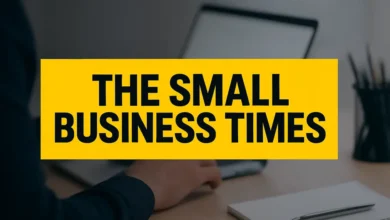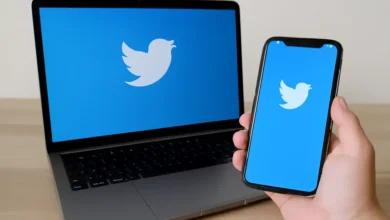Digital Storytelling in the Age of Short Attention Spans

We live in an era where people swipe, scroll, and click rapidly. On a busy feed, a post has just a few seconds to catch attention. This reality has changed digital storytelling. Instead of focusing on long arcs or detailed explanations, creators today must find ways to create meaning in brief moments. The ability to convey emotion, humor, or insight in a concise format has become the key to compelling storytelling.
The Reality of Shrinking Attention
When people say attention spans are shrinking, they don’t mean that humans suddenly can’t concentrate. The difference lies in the environment. In 2025, people are flooded with notifications, feeds, and apps all competing for their attention. The average person spends only a few seconds on any piece of content before moving on to the next one. Researchers tracking screen behavior found that the median attention given to one piece of digital content is less than a minute. This doesn’t mean people never dig deeper, but storytellers must create an irresistible opening to encourage that deeper dive.
This scattered attention has created new expectations. A viewer on TikTok or YouTube Shorts wants an immediate hook rather than a slow buildup. On Instagram, a meme or carousel image must convey the key message immediately. Those who do not adapt to this shift risk their story being skipped before it even starts.
Why Micro-Content Works
Short content is more than a trend; it is now essential to digital storytelling. Quick formats work because they align with how people consume information today, fast, frequent, and often while multitasking. However, “short” doesn’t mean “empty.” When done well, even a few seconds can hold a significant emotional impact.
Think about memes. A single image with a clever caption can capture a cultural moment more vividly than a lengthy essay. A 20-second video can make someone laugh, cry, or prompt them to share it with a friend immediately. Micro-content thrives because it is portable, relatable, and easily remixable. It provides people with the feeling that they are part of a continuing conversation rather than just passive viewers.
Another reason it works is emotional connection. People rarely share content simply because it is well-produced; they share it because it evokes a feeling of recognition, amusement, shock, or empathy. Micro-stories skip lengthy explanations and go straight for the emotion, which is why they spread so quickly across platforms.
The Building Blocks of a Short Story
What makes a digital story effective when time is limited? First, it needs a strong hook. Within seconds, something should spark curiosity: an eye-catching statement, a compelling visual, or a question that demands an answer. Without this, even the most thoughtful story will be lost in the scroll.
Second, clarity is crucial. There is no space for clutter or multiple threads. Every piece of content should focus on a single idea or feeling. While complexity can exist, it should be explored over several posts rather than being condensed into one overloaded clip.
Third, relatability matters. Even brief content needs a human element to connect with someone or something that the audience can see themselves in. This could be an everyday situation turned humorous, a nostalgic reference, or a universal struggle depicted in a quick snapshot.
Lastly, the story must deliver an emotional impact. Humor, surprise, or empathy create lasting impressions that remain long after the content is consumed. These emotions help make a story memorable and inspire people to share it with others.
The Role of Creative Tools
One reason micro-content is thriving is the availability of creation tools. A decade ago, making digital stories required complex editing software. Now, anyone can create a meme, clip, or short animation in a matter of minutes using free online tools. For instance, a meme generator free can help someone instantly turn an idea into a shareable story. This democratization of content creation means that storytelling is not only for brands or professionals; it belongs to anyone with a smartphone and a creative spark.
How Short Stories Carry Depth
It may seem contradictory, but depth can exist within brevity. A 15-second video can convey a powerful message if it’s part of a series that evolves. This episodic approach allows creators to reveal layers gradually, encouraging audiences to return for the next segment. What used to be a single long video can now be divided into digestible moments, each holding attention while telling something meaningful as a whole.
Symbolism also helps condense depth into a small space. A recurring image, color, or phrase can give short content a greater sense of unity. Instead of explaining everything, creators let the audience fill in the gaps. This act of participation often boosts the overall impact.
Another technique is to structure even the smallest stories with a clear beginning, middle, and end. A meme can include a surprising twist. A short video can establish a scenario, build tension, and deliver a payoff all in under 30 seconds. These peaks create a satisfaction that lingers long after the moment has passed.
Emerging Trends in 2025
Digital storytelling continues to evolve alongside technological advancements. One of the significant shifts is the use of AI tools that assist in writing scripts, generating visuals, or editing videos. While AI speeds up creation, the most successful storytellers combine these tools with an authentic human voice. People want genuine content, and material that feels overly machine-made often falls flat.
Another growing trend is the use of augmented reality in storytelling. AR filters and overlays allow audiences to engage with stories rather than just watch them. Although still in its early stages, this technology indicates a move toward more immersive experiences in the future.
At the same time, the criteria for measuring success are changing. Raw views no longer carry as much weight. What matters now is retention, whether people watch all the way through, rewatch, or share. In short formats, keeping attention for even a few extra seconds shows stronger engagement. Creators who can keep viewers interested, rather than just draw clicks, are the ones experiencing long-term success.
Audiences also show signs of fatigue from constant posting. People are tuning out accounts that overwhelm feeds with endless, shallow updates. Instead, they favor those who post thoughtfully, valuing quality over quantity. This suggests that the future of storytelling may involve fewer but more carefully crafted micro-moments, rather than rushing through them.
A Storyteller’s Playbook
For creators facing short attention spans, a straightforward playbook can help:
- Start with the hook. Ask yourself what will make someone stop scrolling. It could be humor, curiosity, or surprise.
- Focus on one idea. If you try to include too much, you’ll lose your audience.
- Choose the right format. Whether it’s a video, meme, GIF, or even an interactive poll, match your story to the platform being used.
- Keep it visually and emotionally engaging. Use color, captions, music, or pacing to capture and maintain attention.
- Encourage participation. Stories that invite replies, remixes, or shares tend to have longer lives.
- Finally, measure and adjust. Look beyond likes to see how long people watch, whether they share, and if they return for more. That feedback is essential for evolving your storytelling.
When Seconds Tell Big Stories
Even in a world where time feels limited, stories remain powerful. They simply take on new forms, memes that capture humor in a single frame, clips that deliver joy or surprise in 30 seconds, posts that invite conversation with just a few words. Mastering digital storytelling today isn’t about extending attention spans; it’s about making the brief moments available meaningful. In those seconds, a connection occurs. And connection, whether brief or not, is what storytelling has always been about.
FAQs
1. What is digital storytelling?
Digital storytelling is the practice of using online tools, such as videos, memes, graphics, or interactive posts, to share stories that connect with audiences on an emotional and visual level.
2. Why are attention spans shorter today?
With constant notifications, social feeds, and multitasking, people switch focus more often. This doesn’t mean humans lost focus; it means content must hook attention faster to compete in a crowded digital space.
3. What makes a good digital story in short form?
A strong hook, a clear single message, and an emotional hit are key. Stories that surprise, amuse, or resonate personally are more likely to be remembered and shared.
4. How can brands use memes or micro-content effectively?
Brands can utilize memes, GIFs, or short clips to demonstrate relatability and foster a sense of community. Tools like a meme generator help simplify the process while keeping content fresh and shareable.
5. Is short-form storytelling only for social media?
Not at all. While platforms like TikTok, Instagram, and YouTube Shorts dominate, short storytelling is also used in ads, newsletters, presentations, and even e-commerce to grab attention quickly.
6. What trends are shaping digital storytelling in 2025?
Key trends include AI-assisted content creation, augmented reality filters, a shift toward measuring retention over raw views, and audiences rewarding fewer but higher-quality posts.



